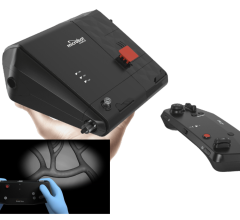
March 6, 2014 — MedStar Heart Institute of Washington, D.C., and Infraredx Inc. enrolled the first participant in the Lipid-Rich Plaque (LRP) Study. The LRP Study is a prospective, multi-center study aimed at identifying a correlation between LRPs and the occurrence of a cardiac event within two years. LRPs, which are implicated in most heart attacks, will be identified in study participants using the Infraredx TVC Imaging System, a dual modality intravascular imaging catheter.
MedStar Heart Institute is one of the 100 clinical sites worldwide to participate in the trial.
“We are pleased to announce the start of enrollment for this major international study testing the ability of near-infrared spectroscopy (NIRS) to detect the cholesterol-rich plaques suspected of causing heart attacks,” said James Muller, M.D., co-founder and chief medical officer of Infraredx. “The decision to undertake this important study was based on a wealth of data stemming from decades of research and development by a dedicated team of more than 100 engineers and clinical scientists. Once completed, the LRP Study could redefine the role of intravascular imaging and lay the groundwork for changing standard protocol for managing coronary artery disease.”
The TVC Imaging System integrates NIRS to detect lipid-core plaques, and enhanced intravascular ultrasound (IVUS) to visualize the vessel structure, including the presence of plaques and the degree of stenosis. The system identifies plaques suspected to be vulnerable to rupture, which can cause a fatal coronary blockage. Current methods of diagnosing coronary artery disease are limited in their ability to detect such plaques.
Previous studies have demonstrated that NIRS imaging in patients can identify cholesterol-rich plaques that have caused a heart attack or cardiac arrest. In a heart attack study published in the Journal of the American College of Cardiology Cardiovascular Interventions, researchers used NIRS imaging to detect a lipid-rich plaque at the culprit site in 19 of the 20 patients studied. This data was featured as one of Discover magazine’s top 100 science stories of 2013.
“The LRP Study could be the largest study to use intravascular imaging to link suspected vulnerable plaques to a higher risk of future coronary events.” said Ron Waksman, M.D., international principal investigator of the LRP Study, and director of cardiovascular research and advanced education at the MedStar Heart Institute. “Successful identification of vulnerable plaques could help clinicians better manage high-risk patients and potentially prevent coronary events with the vast array of currently available interventional devices.”
For more information: clinicaltrials.gov


 January 14, 2025
January 14, 2025 







